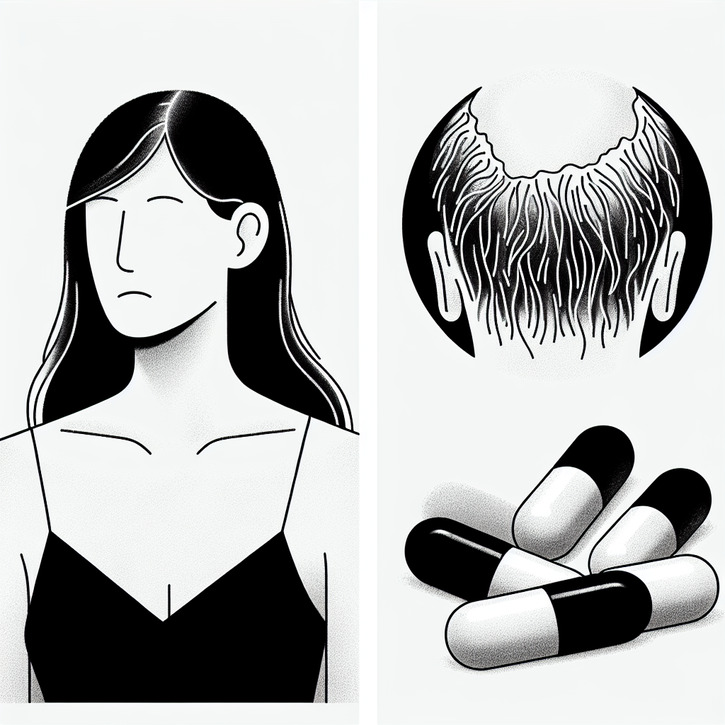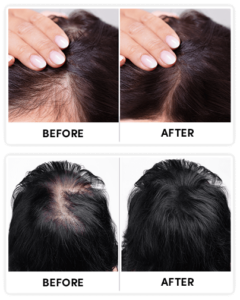DOXYCYCLINE HAIR LOSS Explored: What Every Patient Needs to Know

Doxycycline Hair Loss: Introduction and Overview
So, What’s Doxycycline All About?
Doxycycline might ring a bell if you’ve ever needed antibiotics – it’s been a go-to choice for doctors for ages, tackling all sorts of bacterial infections. From respiratory issues and acne to Lyme disease and more, this versatile member of the tetracycline family has helped countless patients feel better. Even though most people enjoy its benefits and ease of use, it isn’t without its quirks. Along with its healing properties, some patients have started noticing unexpected bumps in the road – like potential impacts on hair health.
How does it work, you ask? Simply put, doxycycline stops bacteria in their tracks by hindering their protein-making machinery, which keeps infections from spreading. Over time, experts have been keeping an eye on both its upsides and any side effects through studies and personal stories. While the overall vibe about doxycycline stays positive, there’s been more chatter lately about one less-talked-about effect: hair loss.
Spotting the Signs of Doxycycline Hair Loss
If you’re on doxycycline and you start noticing odd changes with your hair – maybe it’s thinning a bit or shedding more than usual – it might be a good idea to keep a closer watch. Some folks have mentioned that their hair seems to lose its usual bounce or density, even if nothing else seems out of the ordinary. These changes can be pretty subtle at first, but they’re important clues that you—and your doctor—shouldn’t ignore.
There’s an increasing buzz in patient circles about noticing things like unusual thinning or breakage, and it turns out that early detection can make all the difference in tweaking your treatment plan. Many healthcare providers even recommend jotting down any hair changes you notice during your doxycycline course to help guide your next steps.
Why Everyone’s Talking About Doxycycline Hair Loss
Lately, discussions about hair loss linked to doxycycline have been picking up steam, thanks in part to personal stories shared online and increased awareness about medication side effects. Even if it’s only a handful of reports, these anecdotes are enough to prompt both patients and professionals to take a closer look at any possible connections between the drug and hair health. The idea is that openly discussing side effects doesn’t have to shake confidence in the medication – it just means we’re all better informed.
Hair isn’t just strands on your head; it’s a big part of how you see yourself. So if something seems off, like a change in hair volume or texture, it’s completely understandable to worry. As more real-life experiences line up with some early research, patients are encouraged to bring up any concerns with their doctors sooner rather than later. That kind of honest, two-way conversation helps everyone manage the treatment more effectively.
Doxycycline Hair Loss: Causes and Underlying Mechanisms
The Science Behind How Doxycycline Might Affect Your Hair
While doxycycline is primarily celebrated for its antibiotic powers, its influence on other parts of your body can sometimes lead to surprises – like troubles with hair growth. Researchers are digging into how this medication interacts with your cells, especially in relation to the hair growth cycle. The prevailing thought is that doxycycline might spark an inflammatory response or even tinker with enzymes that help keep cells in tip-top condition. For most, any impact is minor, but some people seem to be more sensitive.
Top Trichologist: Do This To Your Scalp To Regrow A Full Head Of Hair

Completely natural and dirt cheap way that makes it possible for you to finally regrow all your hair back.
Try this at homeTypically, antibiotics target those pesky bacteria, but the flip side is that they can sometimes send ripple effects through the body, occasionally nudging hair follicles in unexpected ways. Ongoing studies are looking at changes in scalp blood flow and cellular activity, trying to nail down whether doxycycline might be upsetting that delicate balance needed for healthy hair growth. While the evidence is still evolving, this merry dance of medication and biology is sparking fresh research and thoughtful reappraisals of long-term treatment outcomes.
How Doxycycline Could Throw Off Your Hair’s Natural Rhythm
Hair grows in a kind of natural cycle – a blend of growth, rest, and shedding. There’s a thought that doxycycline might interfere with the messaging systems at the cellular level that keep this cycle humming smoothly. For some, this interference might only cause a bit of extra shedding or a temporary drop in hair density, while for others, the changes can be a bit more noticeable. Importantly though, these instances aren’t all doom and gloom, but when they do happen, they matter a lot to those experiencing them.
The drug might influence the nourishment of hair follicles by altering blood flow or tweaking growth factor levels. This could push hair follicles to exit their growing phase sooner than they should, leading to a noticeable drop in active hair strands. The good news is that most of the time, these changes are reversible—especially if your doctor adjusts or stops the treatment. Still, it shows why keeping a close eye on any changes during therapy is important for catching these issues early.
Doxycycline Hair Loss: Identifying Symptoms and Side Effects
What to Look Out For: Early Signs of Hair Loss on Doxycycline
It pays to be on the lookout for early signs of hair loss if you’re taking doxycycline. You might find extra hair on your pillow or notice more strands in the shower drain. Often, the loss creeps in gradually, without any dramatic symptoms to warn you. Even a slight reduction in hair density or a subtle textural change can be an early hint that something’s off.
Catching these little changes early gives you a head start on discussing them with your doctor. There’s a growing push for patients to actively monitor their hair during and after doxycycline treatment, not just for the sake of appearance but for overall health insights. When you see these changes, a quick chat with your healthcare provider can help figure out if doxycycline might be the culprit and set you on a course for timely intervention.
Other Side Effects That Might Tag Along with Hair Loss
Sometimes, hair loss isn’t the only party crasher when you’re on doxycycline. Some patients also deal with a mix of other side effects, like stomach upset, sensitivity to sunlight, or even mild allergic reactions. These issues can muddy the waters, making it tough to say for sure if the medication is the only factor at play.
That’s why doctors often suggest keeping a detailed log of any symptoms you experience while on doxycycline. This diary can be super helpful during appointments, giving your doctor the full picture to better understand what’s happening. Most of these systemic side effects tend to be mild and temporary, but they serve as important reminders to monitor your overall health during any lengthy antibiotic regimen.
Why The Ancient Samurai Warriors Never Lost Their Hair…

guaranteed to work for any men or women out there...
Try this at homeFiguring Out the Real Culprit: Is It Doxycycline or Something Else?
Figuring out whether your hair loss is tied directly to doxycycline or if something else is at work can be pretty challenging. You see, stress, nutritional hiccups, or hormonal changes can all play a role in hair shedding, and these issues can look remarkably similar to drug-induced changes. That’s why the doctor-patient conversation is so key. A detailed look at your medical history and symptoms can often point to the true source of your hair woes.
If you’ve already had hair issues in the past, it’s smart to chat about them with your doctor before starting a new treatment. Then, if you notice unexpected changes while taking doxycycline, careful comparison of the treatment timeline with your hair’s health usually helps pinpoint whether the medication might be to blame. This nuanced, step-by-step approach ensures that you get the right diagnosis and treatment – without overlooking any other possibilities.
Stories from the Front Lines: Patient Experiences
A lot of patients have shared their personal stories about doxycycline and hair loss, and these real-life experiences add a very human element to the discussion. Some people mention gradual thinning that eventually improved once they switched up their treatment, while others had ongoing issues until they sought help. These varied accounts remind us that while not everyone will face hair loss, being aware makes a huge difference in managing it effectively.
It’s heartening to see more people openly discussing their experiences with doxycycline hair loss—it helps create a supportive space where everyone feels comfortable talking about potential side effects. This collective sharing not only boosts overall awareness but also aids healthcare providers in fine-tuning treatment plans for better, more personalized care.
Doxycycline Hair Loss: Assessing Risk Factors and Vulnerabilities
The Role of Genetics and Lifestyle in Hair Loss on Doxycycline
Let’s face it: our genes and daily habits play a major role in how our bodies react to medications. If you’ve got a family history of hair loss, you might already be a bit more sensitive, and when you add in lifestyle factors like high stress or poor nutrition, the risk can go up a notch. It’s not just the medication at work here – it’s a mix of inherited traits and everyday choices that can potentially amplify the effects on your hair.
This dynamic interplay between genetics, lifestyle, and medication response is still under the microscope, but it’s becoming clearer that personal history matters. If hair thinning runs in your family or your everyday habits aren’t exactly hair-friendly, it’s wise to keep a closer eye on any changes once you start doxycycline. Armed with this knowledge, doctors can provide more personalized advice and monitoring throughout your treatment.
When Pre-existing Conditions Add Fuel to the Fire
If you’re already dealing with health issues like autoimmune disorders, thyroid problems, or chronic stress, adding doxycycline into the mix might just tip the scales further. Conditions that already put your hair at risk can sometimes make you even more vulnerable to the side effects of medication, potentially speeding up the process of hair thinning or loss.
Watch Your Hair Come Back FASTER Than You EVER Dreamed Possible

WITHOUT Expensive Medications, Lasers, or Painful Surgeries!
Try this at homeThat’s why a full health check-up is essential before jumping into any new treatment. When your doctor has a complete picture of your health history – including any hair-related issues – they can take extra steps, like recommending more frequent check-ups or lifestyle tweaks, to help smooth out the bumps along the way. This proactive approach is all about ensuring you’re supported throughout your treatment.
Doxycycline Hair Loss: Diagnostic Approaches and Testing
How Doctors Diagnose Doxycycline-Related Hair Loss
When it comes to diagnosing hair loss potentially linked to doxycycline, doctors take a close, hands-on approach. A typical first step is a thorough examination of your scalp and a discussion about when you started noticing changes in your hair. They’ll dive into your medical history to rule out other reasons for the hair loss – it’s as much about art as it is about science.
Your doctor might use tools like a dermoscope or trichoscope to get a closer look at your hair density and follicle condition. This careful mix of observation and conversation often helps distinguish typical hair shedding from something that might be triggered by the antibiotic. With the right diagnostic tactics, early intervention becomes possible, giving you the best shot at minimizing any lasting effects.
Digging Deeper: Advanced Tests Behind the Diagnosis
Sometimes, a physical exam isn’t quite enough, and further lab tests come into play. Blood tests can check your hormone levels, look for signs of inflammation, or highlight any nutritional gaps that might be causing extra hair shedding. In some cases, a scalp biopsy might be on the table to get a microscopic view of what’s really going on in your hair follicles. These additional tests help solidify the connection—or rule it out—between doxycycline and your hair loss.
By combining what the doctor sees with hard lab data, there’s a much clearer picture of your overall health. It’s a way to back up clinical suspicions with concrete evidence, ensuring that any changes in your hair are caught and managed as effectively as possible.
The Importance of Your Health History in the Diagnosis Process
Never underestimate the power of your own story when it comes to diagnosing hair loss. A detailed history of your past experiences with medications, your family’s hair patterns, and any previous hair concerns can be a game changer. This information helps your healthcare provider understand the full context, making it easier to figure out whether doxycycline is the likely suspect or if something else might be at play.
Taking time to go over your full medical background can make all the difference. It not only supports a more accurate diagnosis but also ensures that you receive the most appropriate care moving forward. Open communication and detailed record-keeping are key to understanding and mitigating the effects of any side effects, including those on your hair.






